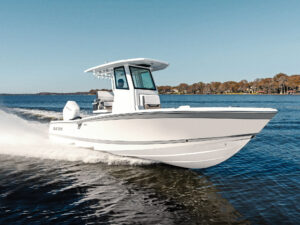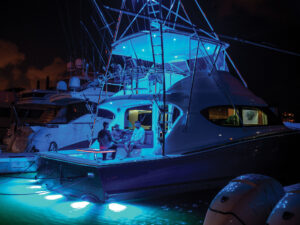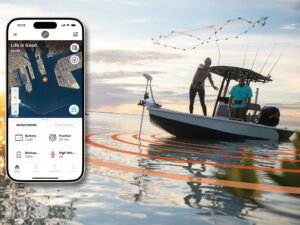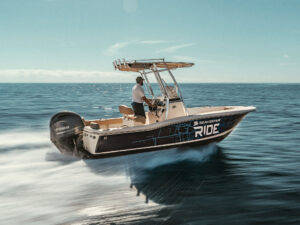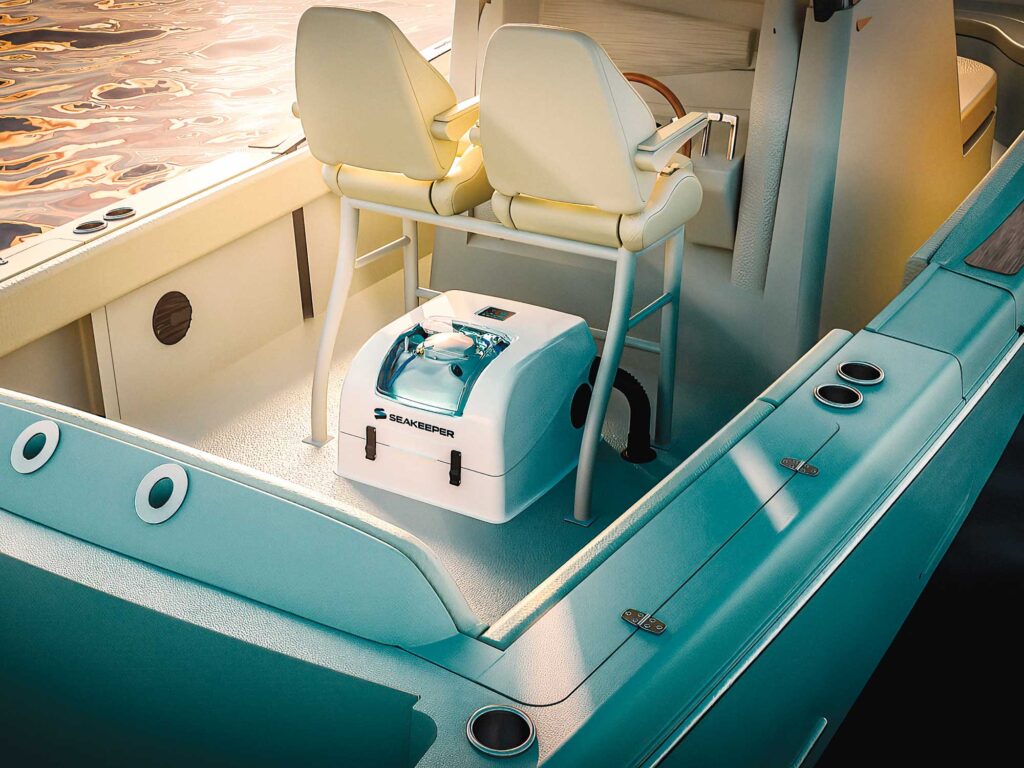
While fishermen are a hardy bunch used to being abused and battered by rough seas, pelting spray and the weather, those who remain fresher, more alert and comfortable will be better able to persevere and remain alert in the pursuit of fish. While some view anything smacking of comfort as a sign of weakness or lack of fortitude, a more enlightened approach is to view creature comforts as additional tools in the angling arsenal. While some amenities reduce a boat’s fishiness, these seven do not, and they might even enhance fishability.
Jump Seats
One element of comfort that many center-console boats have lacked in the past is a place—other than the gunwale—to sit. Most modern center-consoles now feature fold-down transom bench seats, which are often the best place to sit in rough water. But because they face forward, they are not ideal to use while watching a trolling spread. Rear-facing bench seats behind the leaning post eat up cockpit space and prevent crewmembers from standing there when running. A great workaround to that dilemma is the addition of foldout jump seats. The huge advantage is they can be installed to the inwale in less-conventional places, like the walkway aside the center console, to take advantage of shade from the T-top while taking a load off. And when a fish strikes, the seat can flip up quickly to get it out of the way and clear the decks for fish-fighting action. Some boatbuilders offer these seats as standard features, while aftermarket companies like Garelick allow owners to add jump seats wherever they want.
Bow Seats
A common argument between avid anglers is whether an offshore center-console boat should have bow seats or a clear deck in front of the console. While some purists argue for the latter, bow seats offer several fish-catching advantages. Many boats, like the Pursuit S 248 center-console, have bow seats with a filler board that transforms the bow into a raised casting area with a significant height advantage for spotting fish. It also makes a great place from which to toss a cast net. When fishing fun is over, cushions can be deployed for added comfort while on anchor. On boats like the Yellowfin 32 Offshore, a built-in backrest from the bottom cushion can flip up to form bowrider seats.
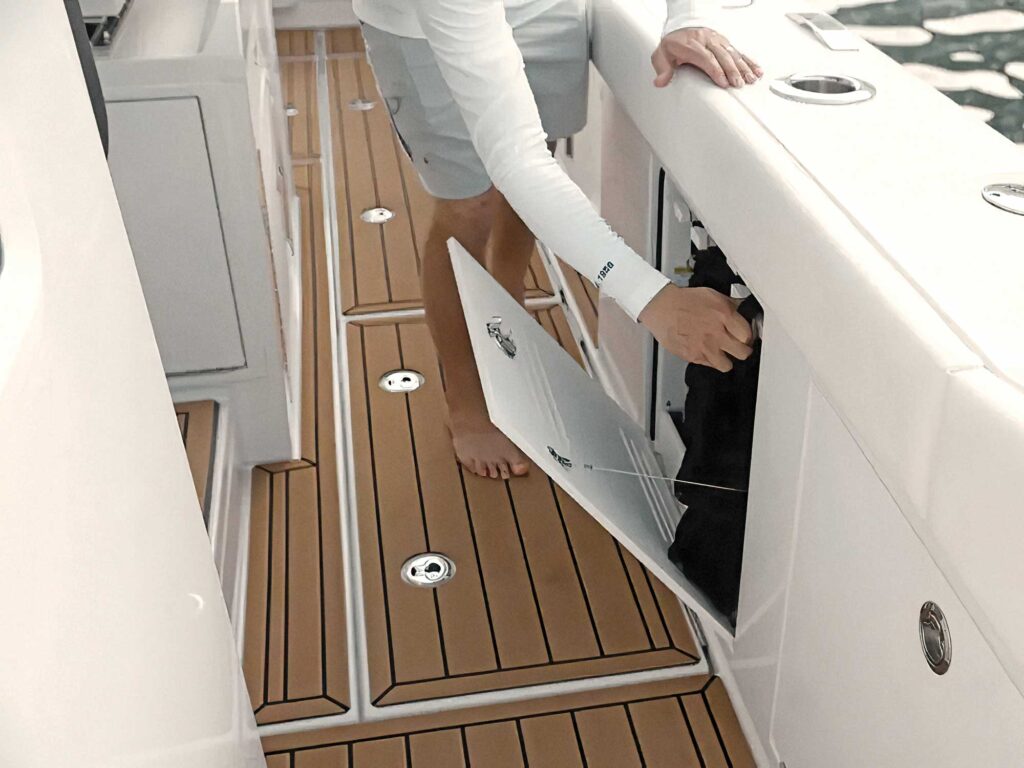
Deck Padding
Some boat owners add closed-foam EVA nonskid, such as SeaDek, for comfort and a custom look. But there are also some fishing benefits. First, the added traction helps anglers keep their footing, which is especially important when fighting a fish or quickly moving around the boat. Then there’s the added stealth factor. If you drop a 2-ounce lead weight on a fiberglass deck, it sounds like a rifle shot that will make every fish within a quarter-mile flinch. But on a padded deck, it’s just a muted thud.
Extra Shade
The sun is one of the most significant contributors to fatigue for anglers. While T-tops offer some shade, they don’t do much for those actively fishing. Older-generation sunshades often have poles or lines to the gunwale for support, but these get in the way of fishing. Newer iterations, like the SureShade, extrude from a hardtop like the tongue of a bratty kid and create shade without becoming a hindrance to fishing. A more tactical aftermarket approach to shade comes from Taco Marine. Called the ShadeFin and ShadeFin Mini, these attach to rod holders or clamp onto railings and are movable to create shade right where you need it. These shades also remove quickly to make room for casts.
Coaming Pads
Coaming pads are one of those features you take for granted until you’re on a boat without them on a rough day. The next worst scenario is coaming pads that are overly large and rounded in shape, which whittle down what little cockpit space you have. The best pads are flat with just enough padding for protection. When fishing, an angler locking their thighs against these pads will help keep them rooted in position, rather than leaning against bare fiberglass, which can cause a fisherman to slip or take home some souvenir bruises.
Read Next: Price Boat or Premium Boat?
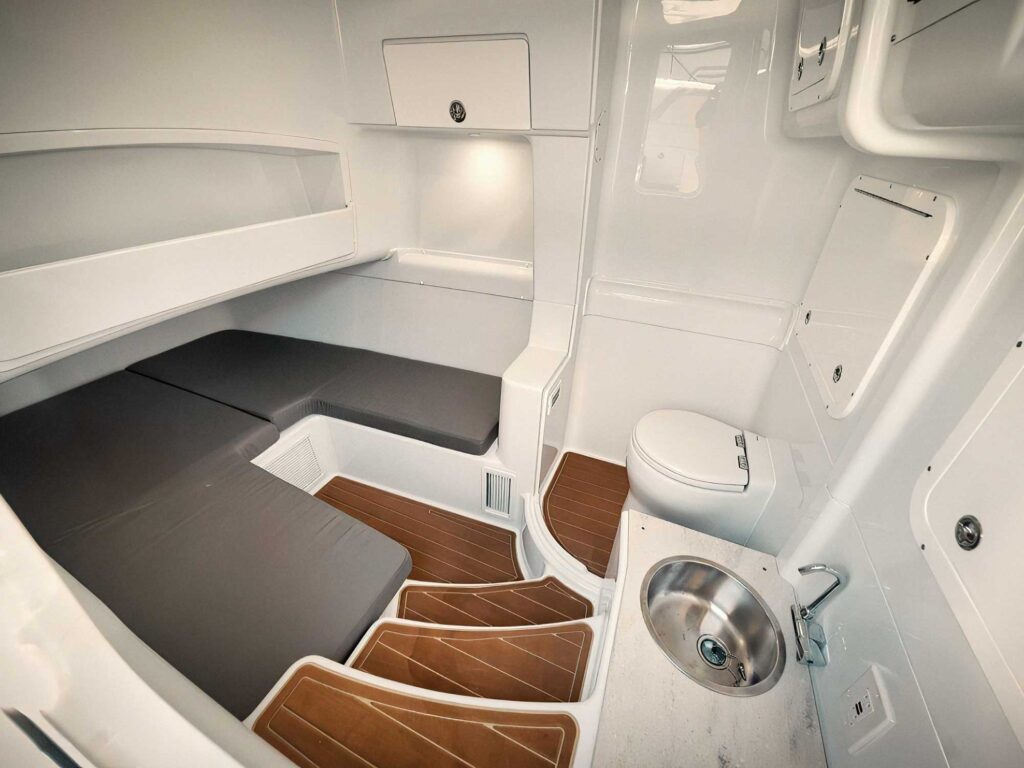
Air Conditioning
The first time I saw air conditioning in an open cockpit, I thought it was a dumb idea. Then I took a Scout 350 Abaco to the Bahamas on a sweltering summer day, and the nearest AC vent suddenly became my new best friend. Like giving a distressed bee a drop of sugar water to bring it back to life, a blast of ice-cold air in the face and chest can revive an exhausted angler after a grueling fight. When on a pre-dawn-to-dusk fishing trip, if there’s an air-conditioned cabin, a power nap in that cocoon is a priceless luxury.
Gyrostabilizer
One of the most significant developments for those with fishing boats starting at 23 feet long is the advent of smaller, more affordable gyrostabilizers from companies like Seakeeper and Quick. In rough water, fishermen often stagger around like Capt. Kirk and his crew during a Klingon attack. A gyrostabilizer reduces side-to-side motion to the point that you feel like you are back on land, which is a safer, more effective platform on which to fight a fish. I predict the size of gyros will keep shrinking along with the price, so boats as small as 18 feet will eventually have them.

